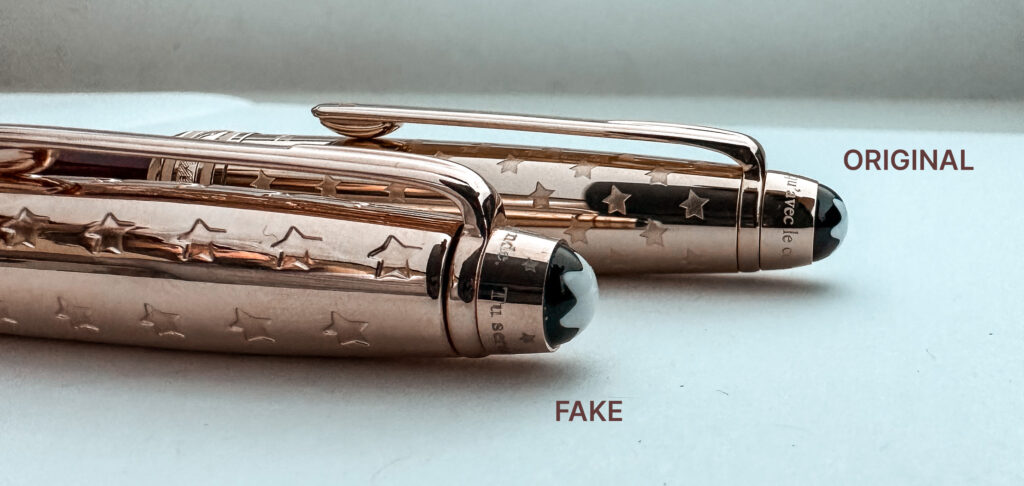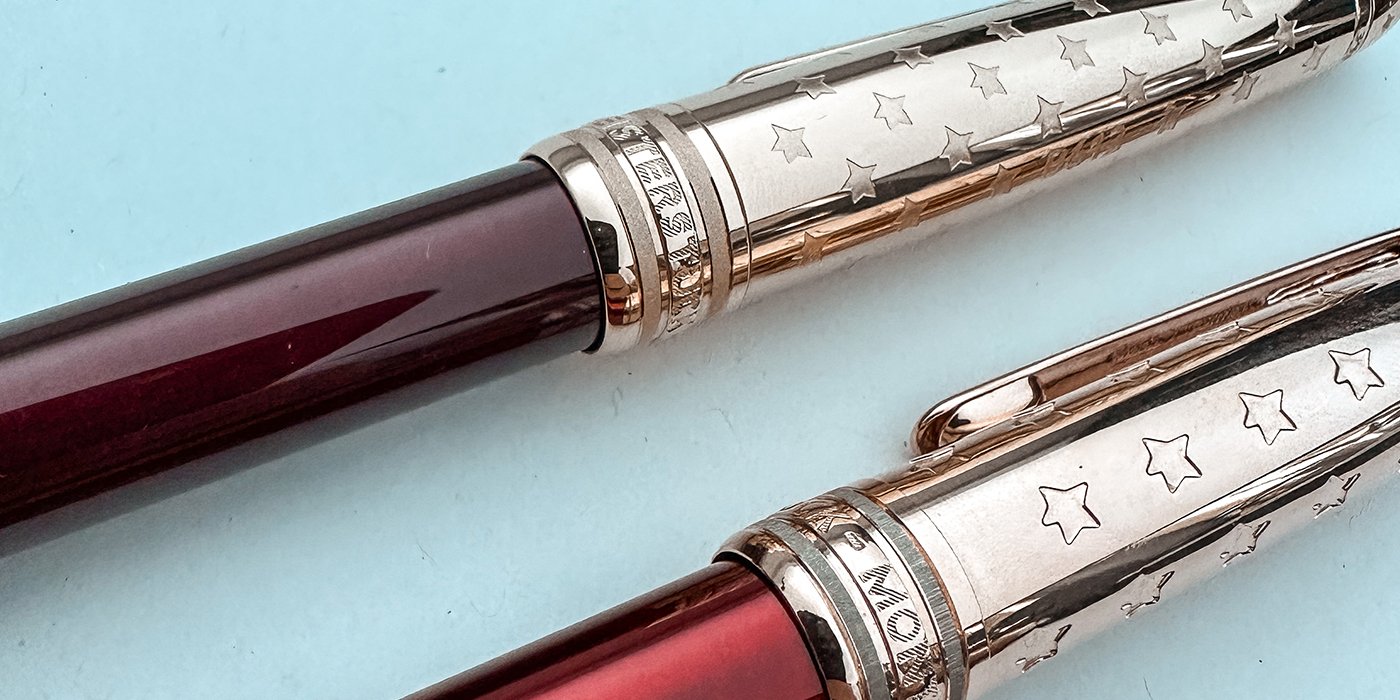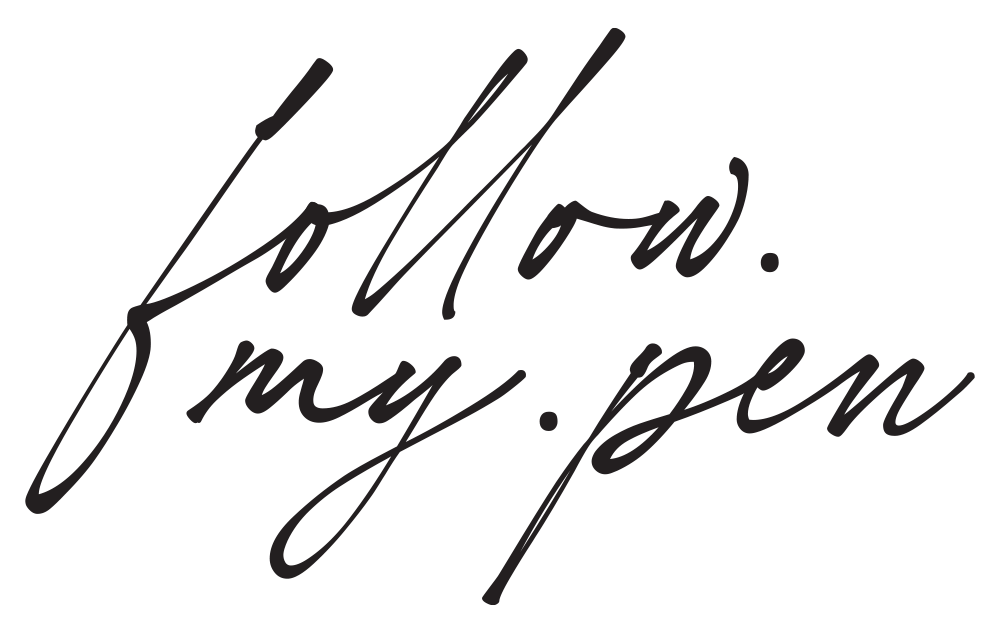For a while, I’ve been meaning to write this blog, but I didn’t have any fake Montblanc pens to examine. When I ordered the Montblanc The Meisterstück Le Petit Prince Doué Classique Ballpoint Pen, I immediately checked if I could find fake versions of it. And, of course, I found them right away. All it took was a search for “Petit prince pen” on one of the Chinese websites, and I came across numerous counterfeit pens, including some that don’t even exist. That’s why I’m writing this article – to help you recognize fake pens when buying them through advertisements.

First and foremost, pay attention to whether such a pen even exists. Counterfeiters often use different colors or even alter the shape. This should be your initial consideration – whether such a pen exists at all.
The price of the pen is also a good indicator. If it’s extremely cheap, around €20, it’s clearly fake. Speculators selling pens wouldn’t risk pricing them too low, and you’ll often find many fake pens around €100-€150. Don’t believe that it’s the deal of a lifetime; usually, it’s not. Then there are other sellers who try to sell the pen at full price, and that’s where you need to be cautious.
Every Montblanc pen has a unique serial number. Unfortunately, there’s no freely accessible database for verification. However, this number can still help since counterfeiters don’t use variable numbers; they use the same combinations. If you enter this number into Google and find forums discussing fake Montblanc pens, it’s a sure sign that it’s a fake.
Perhaps the clearest indicator is the appearance, quality, and perfection of the design – qualities that are difficult to deceive.
Let’s start with the box. I didn’t receive a box with my non-original pen. So, be cautious if the pen lacks a box. If it does have one, pay attention to whether the Montblanc logo has perfectly shaped peaks in their logo symbol. Fakes tend to have sharper points. The box itself might be of lesser quality or different from the original. Compare the original packaging with the advertisement.
Appearance of the Pen
Color
If you’re not buying a black resin Meisterstück, but a colored pen like in my case, you’ll notice the difference immediately. Of course, it’s hard to determine without owning an original pen to compare. Look at photos online, preferably on the Montblanc official website, to understand the real color. In this case, you can see that the rare burgundy lacquer couldn’t be replicated exactly, even from a distance. Maybe it would come close if the pen were in direct sunlight, but they haven’t managed to imitate this lacquer.

Material
Whether you have an all-resin pen or a Solitaire version with parts made from another material, you need to examine this material closely. If it’s resin, the old trick of shining a light through the pen really works. Shine a flashlight from your phone through the pen to see if the casing lights up red or remains black. Black indicates plastic, red indicates resin and thus the original. For the Solitaire edition, as in this case, the metal used is very soft and easily deformable, which is visible on the pen itself. The pen is usually slightly lighter, and upon detailed inspection, you can see that the craftsmanship is poor. This can be a bit challenging if you’re only looking at photos.

Overall Visuals
In photos, you can focus on the overall visual aspect. Find an online shop that sells Montblanc pens and see how the pen should look. Compare it as a whole with the advertisement. In this photo, you can immediately tell that it’s not an original. There are more indicators, but even to a casual observer, the difference is striking. Take a look at the advertisement photo; it’s clear that it’s a fake.

Montblanc Star on the Cap
Over time, counterfeiters have become better at imitating the star. You’ll find a difference, but it’s very difficult unless you have an original pen for comparison. However, in most cases and in this case too, there’s a clear sign. It’s the step at the top of the cap. You can run your finger from the top to the clip and feel the step. You can also see it visually in the photo.

Engraved Serial Number or “Germany”
Engraving the serial number on the clip or cap. While we can’t always determine authenticity based on the identification number, we can determine how it’s engraved. Generally, the font is larger, not well centered, and the characters are shallowly engraved in fakes, so they’re faint or unclear. Font used to be a distinguishing factor, but today it’s very similar, as you can see.

Engraving of Montblanc Meisterstück
Here too, times have changed. Engraving MEISTERSTÜCK used to be a clear sign. Today, the engraving quality has improved, but there’s still a difference, though it’s hard to spot. This point has an advantage because if you have any Meisterstück pen other than vintage ones, you can compare. Here, the comparison was done on-site with an original pen, and you can clearly see the difference.

Refill
The refill can be replaced with an original one, so I won’t comment much on this. Just look at the photos, and you’ll immediately notice the difference. The blending of the ball at the end, or the completely different appearance of the refill, is obvious. But, as I mentioned, don’t rely solely on the nib. Only if you see such a significant difference can you be sure that the refill is original in a fake pen.


Thread
Threads in original pens are always metal, while they’re plastic in fake pens. You can’t discern this from photos much. You’d need a very sharp macro photo to see the difference, that plastic wears more from opening and closing, resulting in imperfections. In contrast, a metal thread is always in perfect condition. Thanks to the metal thread, opening and closing the pen by twisting it is always easy, with a clear snap into position. In contrast, with a fake, it’s a cumbersome twist, requiring more force, and you don’t get the feeling that the pen is now in place.

Clip on the Cap
In the past, people looked at the clip to see if Pix or Made in Germany was engraved on the other side. Today, it’s worse, but they still engrave it, and it’s not as straightforward to recognize. Especially since not all pens need to have it, even if they’re genuine. However, there’s a way to distinguish the original based on the clip. It’s the protrusion from the clip that rests against the pen’s body. In the case of the original version, it’s finely crafted with elegant thickness. In contrast, in a fake pen, this part is unnecessarily large and appears rather off-putting.

Details
Details complete the whole pen. This holds true for distinguishing an original from a fake pen. Whether you use a magnifying glass or a macro lens, you need to spot the difference even without having an original at hand. For instance, the bend on the clip is always poorly executed on fake pens. All the intricate details, like the stars on this pen, the front yellow star, the missing engraving B512, and many more examples, are different. When you examine the pen under a magnifying glass, you’ll see the significant difference.



If you’re unsure and can physically meet the seller, it’s a good choice to visit a Montblanc boutique, where they can advise you and might even be able to verify authenticity through the serial number.
I recommend seeking advice from someone if you’re unsure or simply not buying a suspicious pen. It’s always better to pass up a good offer than to fall victim to a scam. If you want to consult me, feel free to reach out, send photos, and with high-quality images, I can identify whether it’s an original. Be cautious and buy the real deal.



1 Comments:
Manos Tzedakis Says: on 29. August 2023
Hello. Thank you. I recently bought this pen. Can you advise me if it is real? Where can i post photos of it?